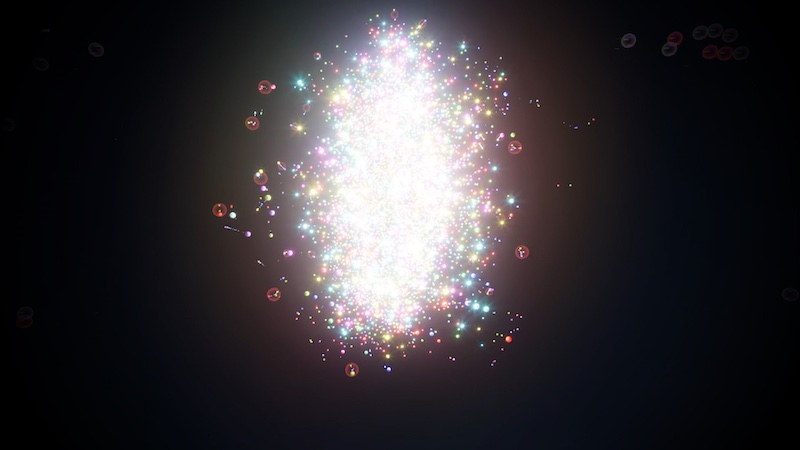
This summer, the Large Hadron Collider (LHC) embarked on a groundbreaking experiment that could reshape our understanding of the early universe. Traditionally filled with beams of protons, the 27-kilometer ring was reconfigured to facilitate its first-ever oxygen–oxygen and neon–neon collisions. Initial findings from this novel data, collected over a six-day period by the ALICE, ATLAS, CMS, and LHCb experiments, were unveiled at the Initial Stages conference in Taipei, Taiwan, held from September 7 to 12.
By smashing atomic nuclei together, physicists aim to study the quark–gluon plasma (QGP), an extreme state of matter that mimics the universe’s conditions during its first microseconds, prior to the formation of atoms. Previously, the exploration of this hot and dense state at the LHC relied on collisions between heavy ions, such as lead or xenon, which maximize the size of the plasma droplet created.
New Insights from Lighter Ion Collisions
Collisions involving lighter ions, such as oxygen, offer a fresh perspective on the QGP, enabling scientists to better understand its characteristics and evolution. These lighter ions are not only smaller than lead or xenon, allowing for a more precise investigation of the minimum size of nuclei needed to create the QGP, but they also exhibit less regular shapes. A neon nucleus, for instance, is predicted to be elongated like a bowling pin—a depiction that has now been clarified thanks to the LHC’s recent results.
The experiments concentrated on measuring subtle patterns in the angles and directions of particles as the QGP droplet expands and cools. These patterns, known as “flow,” are caused by minor distortions in the original collision zone. Remarkably, these flow patterns can be described using the same fluid-dynamics calculations that model everyday fluids, allowing researchers to probe both the properties of the QGP and the geometry of the colliding nuclei.
Breakthroughs in Nuclear Geometry
The ALICE experiment, which specializes in QGP studies, alongside the general-purpose experiments ATLAS and CMS, has measured significant elliptic and triangular flow in oxygen–oxygen and neon–neon collisions. These measurements reveal a strong dependence on whether the collisions are glancing or head-on. The level of agreement between theoretical predictions and empirical data is comparable to that achieved with heavier xenon and lead ions, despite the much smaller system size.
“This provides strong evidence that flow in oxygen–oxygen and neon–neon collisions is driven by nuclear geometry, supporting the bowling-pin structure of the neon nucleus and demonstrating that hydrodynamic flow emerges robustly across collision systems at the LHC,” said a CERN spokesperson.
Complementary findings presented by the LHCb collaboration confirm the bowling-pin shape of the neon nucleus. These results are based on lead–argon and lead–neon collisions in a fixed-target configuration, utilizing data recorded in 2024 with its SMOG apparatus. The LHCb collaboration has also commenced analysis of the oxygen–oxygen and neon–neon collision data.
Implications for Understanding the Universe
These discoveries hold significant implications for our comprehension of nuclear structure and the emergence of matter following the Big Bang. The LHC’s ability to simulate and study the conditions of the early universe provides invaluable insights into the fundamental forces and particles that shaped our cosmos.
“Taken together, these results bring fresh perspectives on nuclear structure and how matter emerged after the Big Bang,” stated CERN Director for Research and Computing Joachim Mnich.
As the LHC continues to investigate these lighter ion collisions, the scientific community anticipates further revelations that could challenge existing theories and pave the way for new understandings of the universe’s infancy. The ongoing analysis and future experiments promise to deepen our knowledge of the fundamental building blocks of matter and the forces that govern them.






